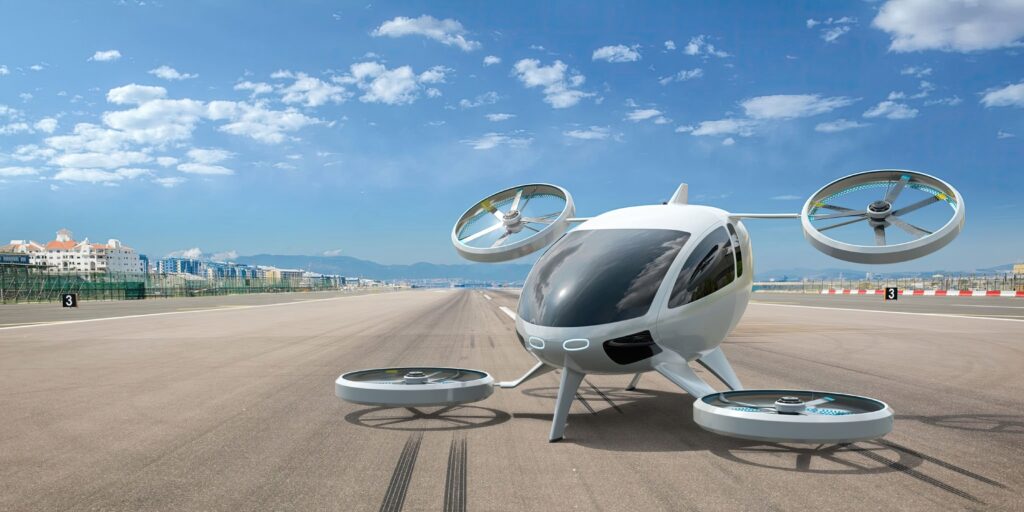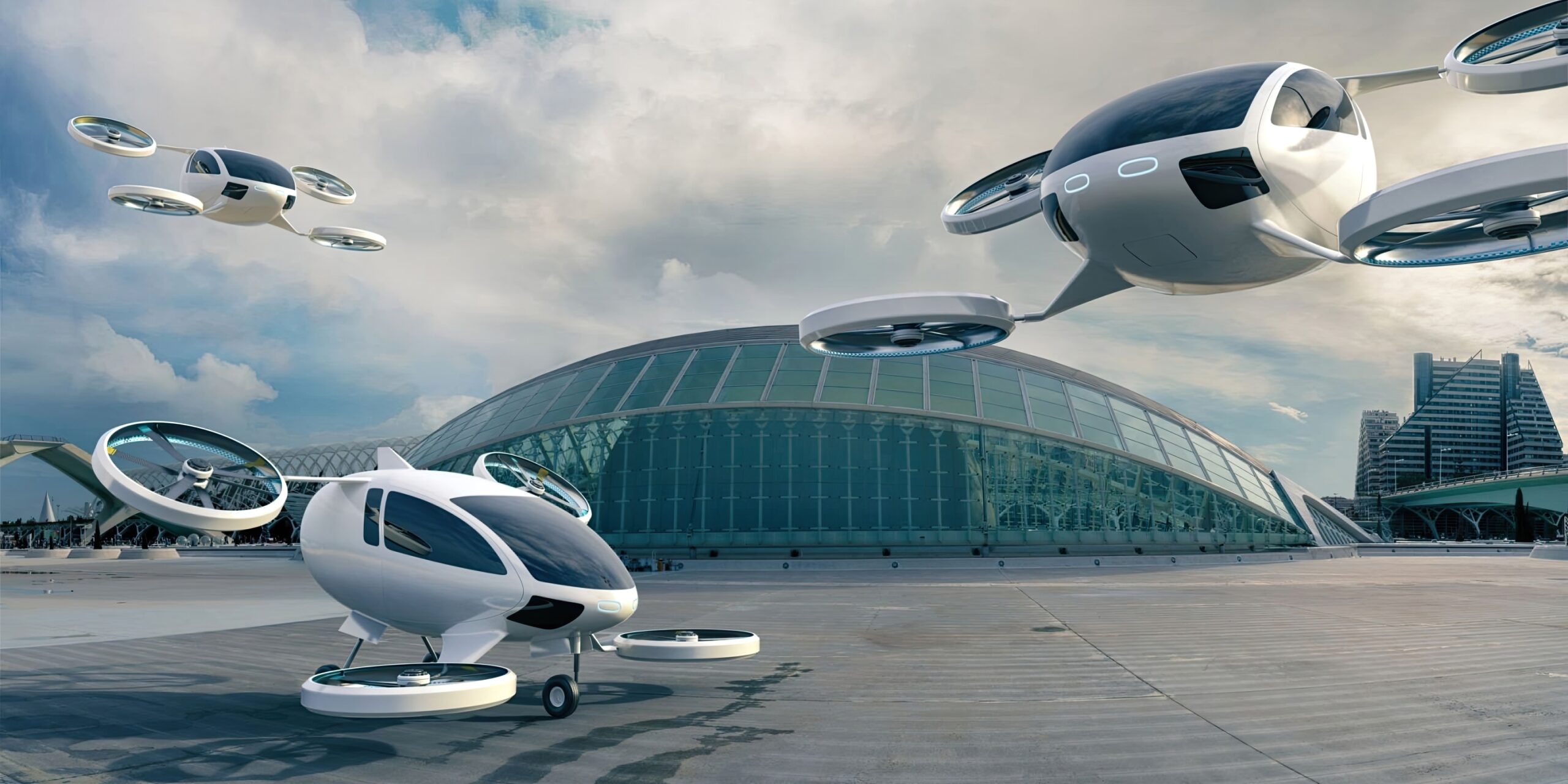WHILE improving technology is forming part of the impetus, the groundswell of interest in the tech is also being fuelled by a push for more seamless and sustainable travel options in a world of increasing urbanisation and climate conscious travellers. So strong is the shift to city-dwelling living that demographic experts forecast that by 2030, around 60% of the world’s population will live in big cities. This fact alone has plenty of city planners and politicians concerned about the limitations of existing rail and road infrastructure, with electric vertical takeoff and landing (eVTOL) aircraft representing at least one significant avenue to head off a predicted ballooning in travel times due to worsening congestion.
For the uninitiated, falling under the UAM umbrella, eVTOLs provide vertical takeoff and landing capabilities, similar to that of helicopters, but instead operate using fully electric propulsion systems that offer the advantages of reduced noise, emissions and running costs. Many of the prototypes being put forward are autonomous (yes, just you and the machine), boasting impressive top speeds of around 240km/h and a range of roughly 170km. It’s clear to see why these kinds of numbers would appear attractive to travellers, who often find themselves stuck at airports waiting for Ubers, buses, or trains to get them to their final destination. It’s somewhat exhilarating to imagine a not-too-distant future where one can disembark from a flight, grab some bags and simply hop aboard an eVTOL to your hotel or tourist attraction, at no stage having to contend with the rigmarole of using connecting ground transport.

So just how pie in the sky are these dream flights?
The best indicator that eVTOLS are a legitimate incoming reality is the large swathe of investment coming from private and government interests from all over the world. In Europe for example, leading IT provider to the aviation sector, SITA, recently formed a new deal with Italy’s UrbanV to develop a digital-first passenger experience for travellers using vertiports (eVTOL’s version of an airport) in Rome. From UrbanV’s test base at Fiumicino Airport, both parties will plot the design and testing of a new passenger process to support the first electric flights between Fiumicino and Rome’s city centre. If successful, the pair have also flagged the potential to closely evaluate commercial synergies worldwide for a joint go-to-market in the UAM segment – so certainly not thinking too small then.
Another prominent player in the UAM space is the German-based Volocopter, which recently opened new production facilities in Bruchsal, where the start-up will have the capacity to assemble more than 50 VoloCity aircraft each year.
Volocopter has committed to launching commercial air taxi services in cities like Singapore, Rome, NEOM and Paris as early as 2024.
In the last month, the company noted that the price for a seat will initially be set “at premium rates”, similar to what a helicopter ride might set travellers back today, but with view to gradually pushing down the price point as it begins to scale and phase in its larger four and five-seat models.
Closer to home, Brazil’s Eve Air Mobility, a subsidiary of Embraer, has inked a deal with Aussie helicopter Microflite to commence operations of eVTOL flights in Melbourne by 2026. The proposed fleet of air taxis in Melbourne are part of its trial phase Down Under, that will likely see Caribbean Park in the city’s east earmarked as the location of the first Victorian vertiport.
The above projects are far from isolated ventures, with many other blue-chip brands like Airbus, Boeing, and United Airlines, to name just a few, throwing their substantial financial weight behind other design development initiatives.
While all this traction and development sounds quite satiating, the reality is that safety regulations pose the biggest hurdles to any of these plans coming to fruition any time soon.
And while the likes of the FAA in the United States and the Civil Aviation Safety Authority (CASA) here in Australia have been viewed as major stumbling blocks, there are signs that the mood may be starting to shift. In July, CASA was formally requested to work with government to enable the integration of UAM services into Australian airspace by providing regulatory oversight of the safety aspects of unmanned aviation. As part of a new Statement of Expectations for CASA over the next two years, how autonomous eVTOLs will fit into the Australian aviation ecosystem has been laid down as a core expectation of the safety body moving forward. The mandate represents a watershed moment for the UAM sector in Australia, with the Federal Government clearly giving serious credence to the idea of this type of innovative transport pushing into the market soon.
Once formal safety guidelines are developed and agreed to, it will likely lead to a storm of infrastructure development at airports across the globe, as well as in key tourists and business precincts, where air taxis will essentially be able to zip between high traffic zones in a matter of only minutes by taking off and landing at conveniently located vertiports.
American investment bank Morgan Stanley predicts that the market for autonomous urban aircraft could be worth up to US$1 trillion by 2040, which it said was based on the impressive technological advances and accelerated investment already taking place in the segment.
In the same way many people gawked cynically at the Wright Brothers when they first precariously took to the air inside their Kitty Hawk plane in the early 1900s, so too can we expect some to be dubious about the applications of flying taxis. But with the imperative of having to move travellers more seamlessly in a world afflicted by climate change, it would appear light weight, zero emissions aircraft might be the right solution for the right time. After all, fortunate favours the brave and cowards die many times before their death, right Doc?







